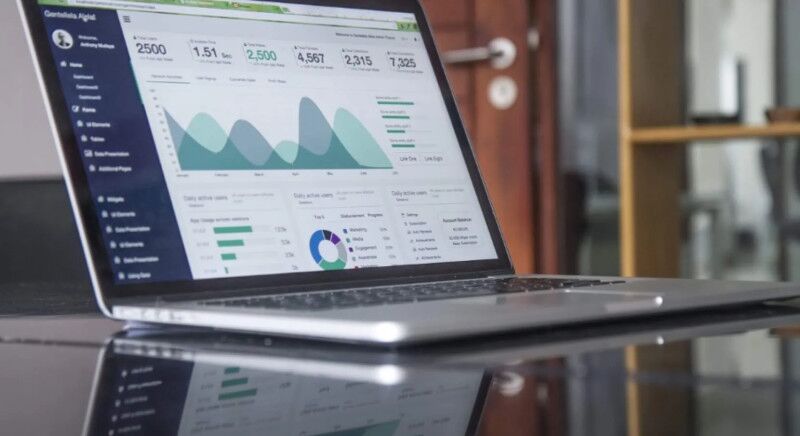Selection and integration of a payment system for a website
A payment system is a complex technological solution that ensures secure online payments between buyers and sellers through a secure data exchange channel. Such systems are an integral part of modern e-commerce and the digital economy.
Electronic payment systems provide users with the ability to make instant money transfers, pay for goods and services, and manage financial transactions via the Internet. Ukrainian payment systems are LiqPay, Portmone, EasyPay and WayForPay, international payment systems such as PayPal, Stripe, Square and others have also gained popularity among Ukrainian users.
The integration of a payment system into a website allows you to automate the process of accepting payments, ensure the security of transactions, reduce the risk of fraud and increase customer confidence. Modern payment systems support a variety of payment methods: bank cards, e-wallets, online banking, self-service terminals, and mobile applications.
Main types of payment systems
The integration of a payment system for a website creates an opportunity for customers to pay for a service or product quickly and conveniently. The electronic payment market offers several main types of payment systems, each of which has its own characteristics and advantages:
- Internet acquiring is a classic system of payment by bank cards through a secure processing center. Such systems provide a high level of security, transaction speed and support for various types of cards (Visa, Mastercard, etc.). For example, LiqPay, WayForPay.
- Payment gateways are universal intermediaries that redirect transactions to the bank's side. They simplify integration with different banks and payment systems, provide a single interface for working with different payment methods. For example, Portmone, EasyPay.
- Electronic wallets are a modern alternative to bank accounts that allow you to store funds in electronic format and make instant transfers. They often offer additional features: accumulation of bonuses, cashback, P2P transfers. For example, PayPal, Google Pay, Apple Pay.
- Payment aggregators are intermediary services that accept funds to their accounts and provide support for multiple payment methods through a single account. They simplify the integration process and often offer additional services: analytics, chargeback management, fraud protection. Similar functionality can be provided by such payment systems as Stripe and Square.
When choosing the type of payment system for integration, it is important to take into account the specifics of your business, geography of users, transaction fees, and technical requirements for implementation.
Selection criteria and types of payment systems for a website
When choosing an electronic payment system to integrate into your website, it is important to conduct a thorough analysis of the following critical factors:
1. Target audience and geography
You need to take into account the geographical location and payment habits of the target audience. For example, LiqPay (integration with Privat24) and Monobank are the most popular in Ukraine, PayPal and Stripe in Europe, and Square and Stripe in the United States. It is important to support the payment methods that are most convenient for your customers.
2. Financial terms
When choosing a payment system, it is important to analyze all financial aspects. The system may include a percentage per transaction (usually 1-3%), a flat fee for each transaction, a monthly service fee, currency conversion fees, initial setup and configuration costs, and additional chargeback fees.
3. Technical integration
When assessing technical capabilities, you should pay attention to the availability of ready-made modules for your CMS, the quality of API documentation, support for various integration methods (API, plugins, widgets), the ability to customize the payment form, the availability of a test environment, and the level of technical support from the provider.
4. Security and compliance
A reliable payment system is a system that must have PCI DSS certification, support 3D Secure technology, provide fraud protection, meet the requirements of the GDPR for working with European customers, and constantly monitor suspicious transactions.
5. Speed and conditions of withdrawal
Conditions for receiving funds include the time of crediting to a bank account (from instant to several days), the minimum amount for withdrawal, support for different banks and payment methods, the possibility of automatic withdrawal of funds, and established limits on transaction volumes.
6. Additional features
Modern payment systems in Ukraine offer advanced functionality, including support for recurring payments, the ability to make mass payments, one-click payments, work with different currencies, provide analytics and reporting, as well as integration with accounting systems.
Popular payment systems in Ukraine
There are several leading players in the Ukrainian market of electronic payment systems. Each of them offers unique capabilities and integration features, which allows businesses to choose the best solution for their needs.
LiqPay
LiqPay is a leading Internet acquiring service in Ukraine from PrivatBank, which processes more than 60% of all online payments in the country. The system provides a complete end-to-end solution, including full integration with Privat24 and support for all bank cards. Users can make payments through popular digital wallets such as Google Pay and Apple Pay, as well as scan QR codes for quick payment. The system perfectly integrates with popular messengers and has ready-made modules for most CMS and frameworks.
The system's commission varies from 1.5% to 2.75% depending on the monthly turnover. LiqPay also provides detailed analytics, the possibility of mass payments and automatic recurring payments, which makes it one of the most comprehensive solutions on the market.
WayForPay
WayForPay is a powerful payment service with a wide range of functionality. The system provides support for cards of all Ukrainian banks and a unique opportunity to make cryptocurrency payments. Thanks to the built-in fraud protection system and advanced real-time transaction analytics, WayForPay guarantees the security and transparency of all transactions. The service also supports recurring payments, installments, and has the ability to work with international payments.
Portmone
Portmone is a time-tested payment system that is distinguished by its multifunctionality. It provides the ability to pay for utilities and government fees, while having deep integration with government services. The system supports automatic recurring payments and offers a convenient personal account for managing all financial transactions. Users can make payments through self-service terminals and have access to a variety of withdrawal methods. It is also worth noting the ability to integrate the system into most modern CMS. In addition, Portmone can work with Apple Pay and Google Pay wallets.
Installment and lending systems
Monobank and other banks offer flexible solutions for online payment by installments with the possibility of installments of up to 24 payments and instant loan decisions. The technical side includes convenient integration via API, connection via Telegram bot, ready-made modules for popular e-commerce platforms, and full integration with accounting and CRM systems.
Each of these payment systems has its own integration requirements, tariffs, and restrictions that should be considered when choosing the best solution for your business.
How the payment system works
The process of processing a payment through an electronic payment system consists of several important stages:
1. Choosing a payment method
The user has the opportunity to choose the most convenient payment method, including a bank card, e-wallet or contactless payments via Apple Pay or Google Pay.
2. Transferring data to the payment system
The system generates a special secure request that contains all the necessary information about the current transaction.
To ensure maximum security, all data is transmitted over a secure connection using the modern TLS encryption protocol version 1.2 or higher.
3. Payment process
After choosing a payment method, the user is automatically redirected to a special secure page to make a payment.
On this page, the user enters the necessary payment data or is authorized through his e-wallet.
For additional transaction security, the system authenticates the user using 3D-Secure technology.
4. Transaction processing
The payment system for the website performs a comprehensive check of the availability of funds on the account and the correctness of the entered data.
Each transaction goes through the anti-fraud monitoring system to identify potential fraudulent activities.
The bank that issued the card conducts the final check and makes a decision to confirm or reject the payment.
5. Payment completion
Immediately after the transaction is completed, the system sends a notification to the user about the status of his payment.
The online store receives an automatic confirmation of the successful transaction.
The system automatically generates an electronic receipt and stores detailed information about the payment in the transaction history.
When choosing electronic payment systems in Ukraine, it is necessary to take into account not only the technical aspects of integration, but also the convenience of the interface for users, fast Particular attention should be paid to data security and availability of round-the-clock technical support.
Integration of a payment system for the website: Stages of implementation
Payment systems for websites require careful planning and step-by-step implementation. To successfully connect a payment system, your website must have a static IP hosting address, a second-level domain name, and a secure https protocol. It is also necessary to ensure the availability of legal information about the company, clearly defined payment and delivery terms, privacy policy, and indicate prices in national currency.
Let's consider the main stages that will help ensure the safe and reliable operation of the payment functionality:
1. Preparatory stage and registration:
- Choosing the optimal payment system according to business needs
- Registering a merchant account and verifying documents
- Getting the necessary API keys and technical documentation
2. Setting up the technical infrastructure:
- Installing an SSL certificate and setting up an HTTPS protocol
- Configuring a web server and security system
- Configuring a callback URL for automatic payment status updates
- Creating a logging and transaction monitoring system
3. Development and integration:
- Installing and configuring the payment system SDK for the website
- Developing components for creating and processing payments
- Implementing security and data validation mechanisms
- Setting up automatic synchronization with the accounting system
After the basic integration is completed, it is necessary to conduct comprehensive testing in a sandbox environment. It is important to check:
- Correctness of payments
- Handling of different types of errors
- Automatic status updates
- Reporting generation
- Funds refund mechanisms
Particular attention should be paid to the adaptability of the payment form for different devices and browsers, as well as ensuring a convenient user experience. It is also recommended to set up a notification system to promptly respond to possible problems with payments.




